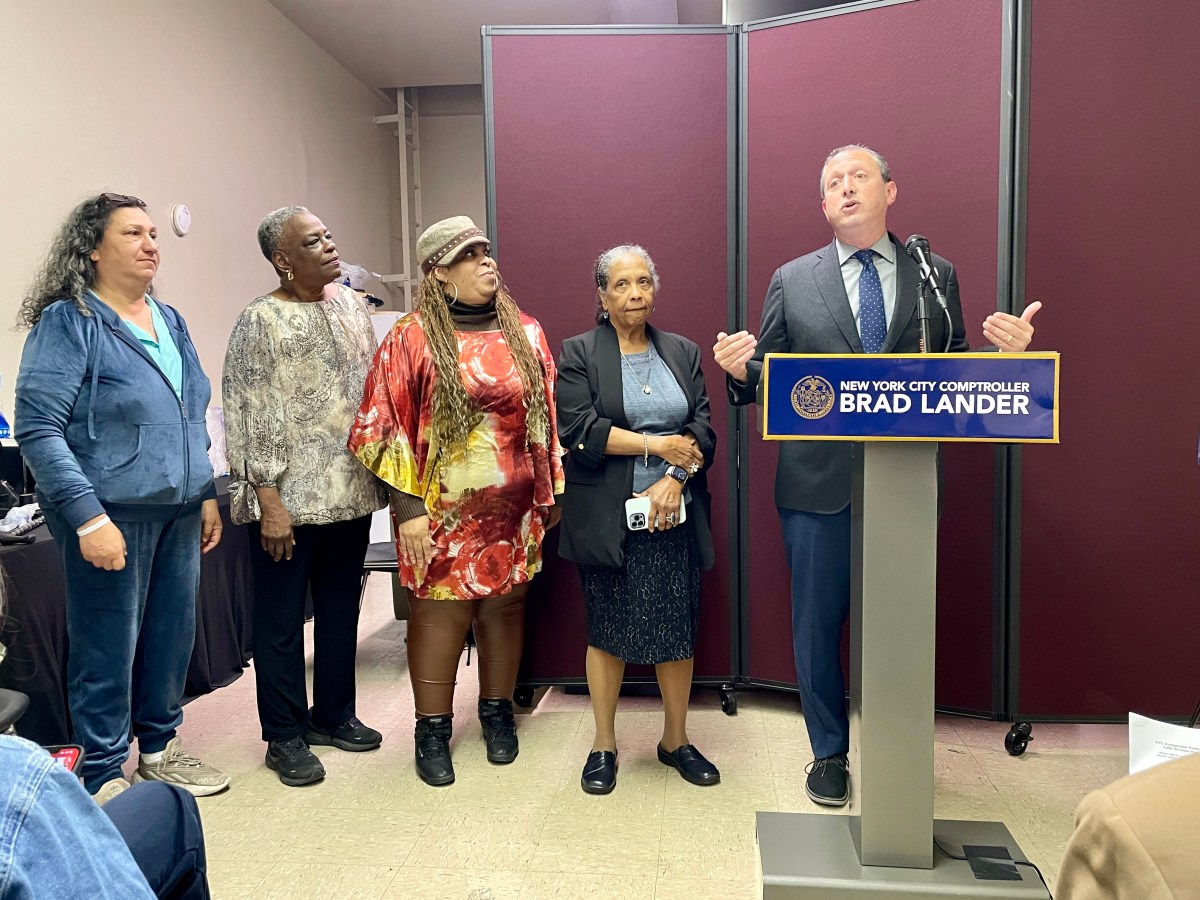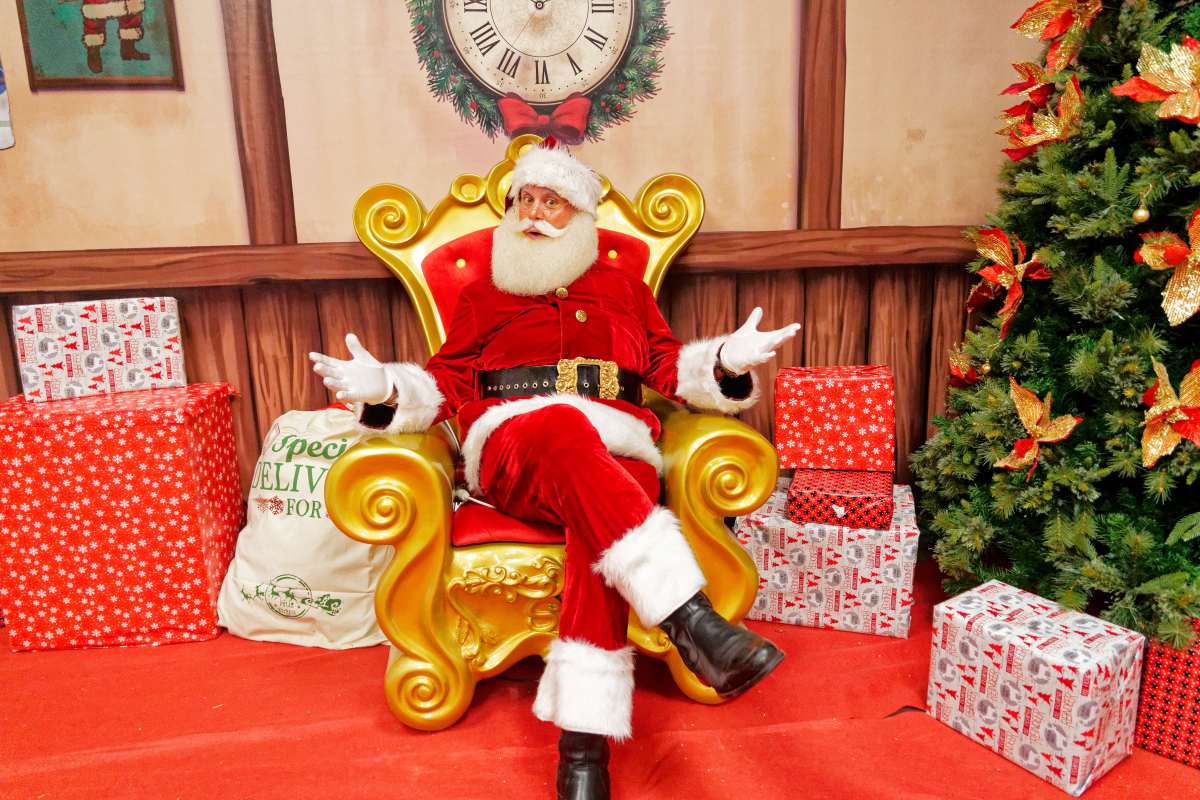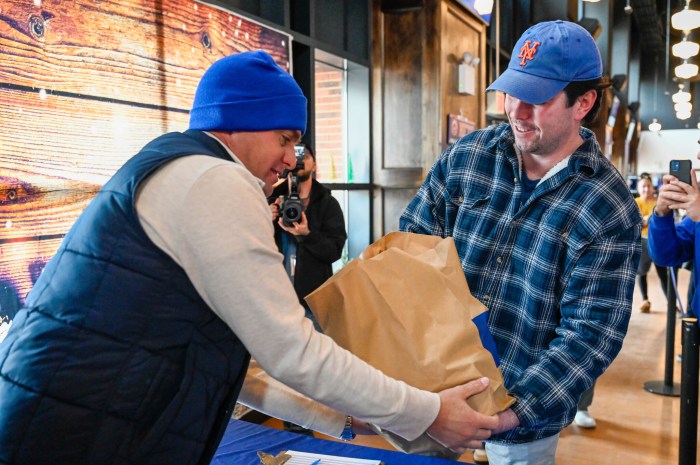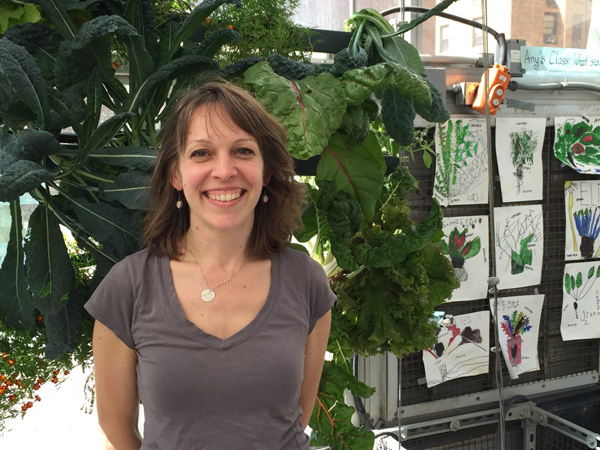
Teacher Shakira Provasoli uses PS 333’s rooftop greenhouse to teach her K–5th-grade students about ecological systems and cycles, environmental interactions, and sustainable cities.
BY COLIN MIXSON
Tribeca resident Shakira Provasoli was treated to a once-in-a-lifetime field trip to the White House last week, where the public-school teacher was honored with the Presidential Innovation Award for Environmental Educators in recognition of a ground breaking curriculum she developed to support her uptown school’s greenhouse learning center.
But the self-effacing elementary instructor humbly argued that she’s not the hero, and that the amazing hydroponic growing space atop the Upper West Side’s PS 333 deserves all the credit.
“It’s definitely the children’s favorite place to go, it’s not about me,” said Provasoli. “It’s like having a field trip, but they get to go every week.”
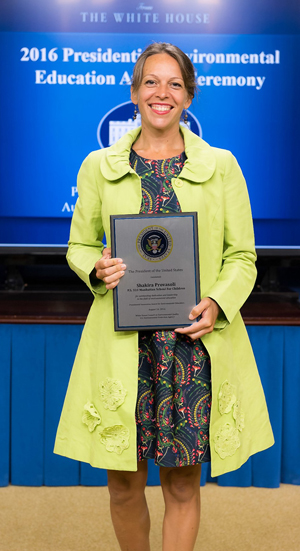
Tribeca resident Shakira Provasoli was honored at the White House last week with a Presidential Innovation Award for Environmental Educators.
All jokes aside, the Tribeca teacher’s lack of pretension belies the invaluable curriculum she’s spent the past five years developing to leverage the impressive hothouse — which features pest-eating ladybugs, fertilizer-producing tilapia, and numerous high-tech hydroponic systems — to infuse her young students with an impressive competence in, and love of, environmental science.
“I want them to love science,” she said. “I want them to feel confident about their understanding of science and I want them to believe that they have the power to make a difference in the world.”
Provasoli isn’t afraid to use the entrancing space to teach deadly serious science, using plants grown in the greenhouse to demonstrate the various effects of climate change, subjecting them to the effects of drought, storms, hot flashes, and various other ugly consequences of climate change.
But her classes are designed to inspire hope, not despair, and Provasoli instructs students that they can take control of their world and work to make it better by understanding the cause and effects of global warming,
“It’s a scary topic,” she said, “but when you have the tools to change it and lessen the effects, they really can make a difference.”
That’s not to say that the greenhouse, with all its flashy gizmos and critters, doesn’t go a long way when it comes to engendering a love of science and the natural world. In fact, there are times when the greenhouse steers the lesson more than Provasoli would like.
“You can’t imagine how difficult it is if a shipment of lady bugs arrived and, god forbid, I want to teach about something else,” Provasoli said. “Sometimes I have to laugh and understand I’m not as exciting as a ladybug.”
The greenhouse at PS 333 was among the first at any public school in the city, although the non-profit-funded growing spaces have since expanded to other schools throughout the city, where teachers and students continue to benefit from the curriculum that Provasoli pioneered.
“I’m pretty sure that it’s used as the basis for their teaching,” said Provasoli.





